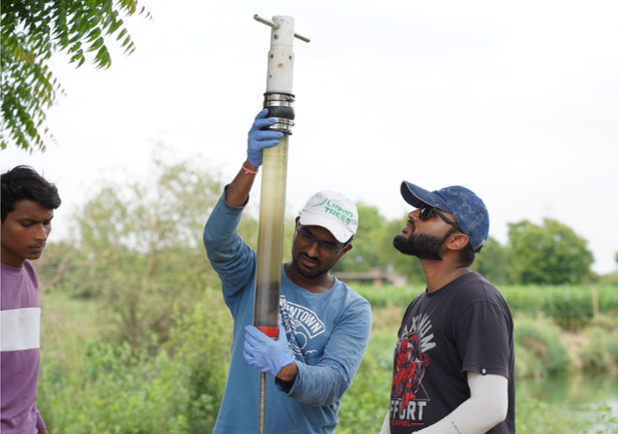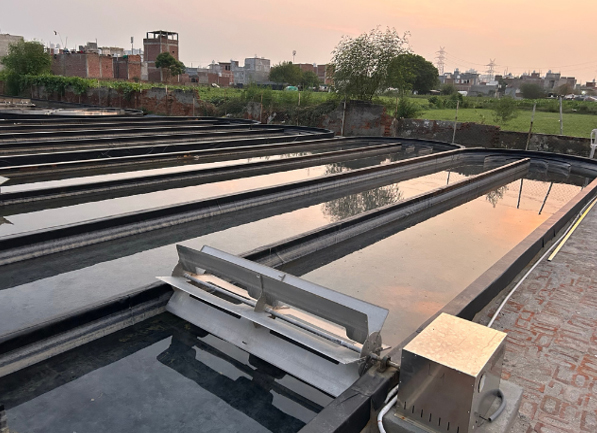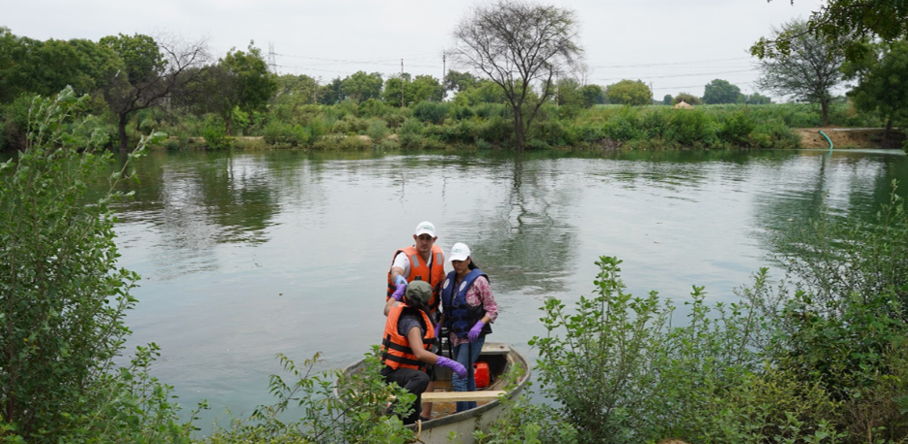
Our track record
Liquid Trees has assessed over 45 river-based carbon projects across 10 countries to select those with the highest potential to make sure your investment improves water quality, protects native aquatic life, and sequesters carbon. Some of our past river projects include: Jamuna River (Bangladesh), Kech River (Pakistan), Kenchab River (Pakistan), Salinas River (Mexico), Conchos River (Mexico), Amba River (India).
Introducing the world’s largest outdoor photobioreactor
In collaboration with DS Group, Liquid Trees helped deploy the world’s largest and India’s first urban photobioreactor (“Liquid Tree”). The reactor is filled with microalgae that absorb CO₂, produce oxygen, remove particulate matter, and yield bio-fertilizer. Read the news article.
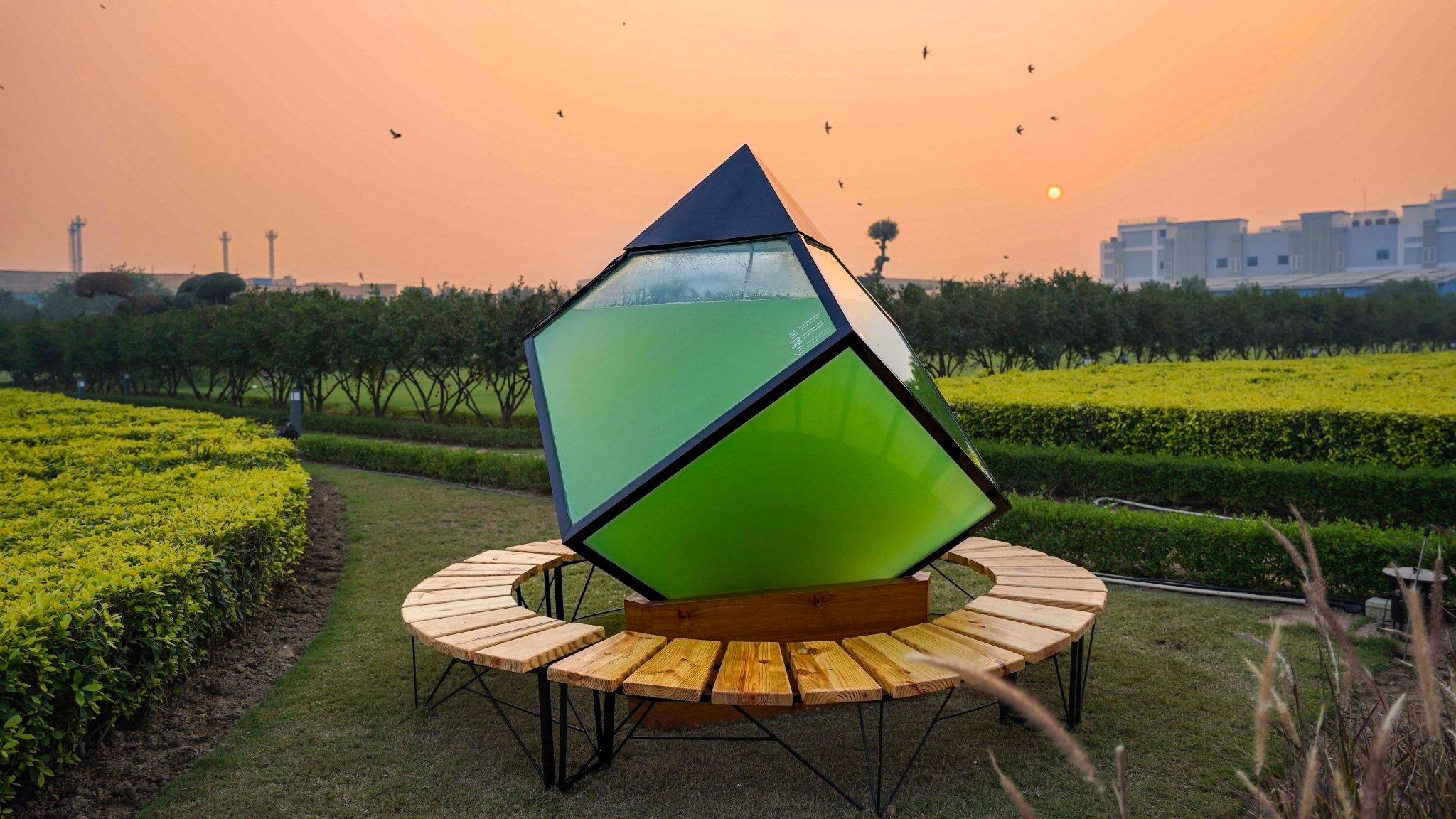
In a pioneering effort to advance urban sustainability, the Dharampal Satyapal Group (DS Group) partnered with Liquid Trees to unveil India’s first outdoor “Liquid Tree” at DS Headquarters, Noida. The cube holds 1,600 L of microalgae solution—capturing roughly the same CO₂ as six mature trees. Blending nature, technology, and design, it showcases how microalgae can clean air, store carbon in biomass, and support greener cities.
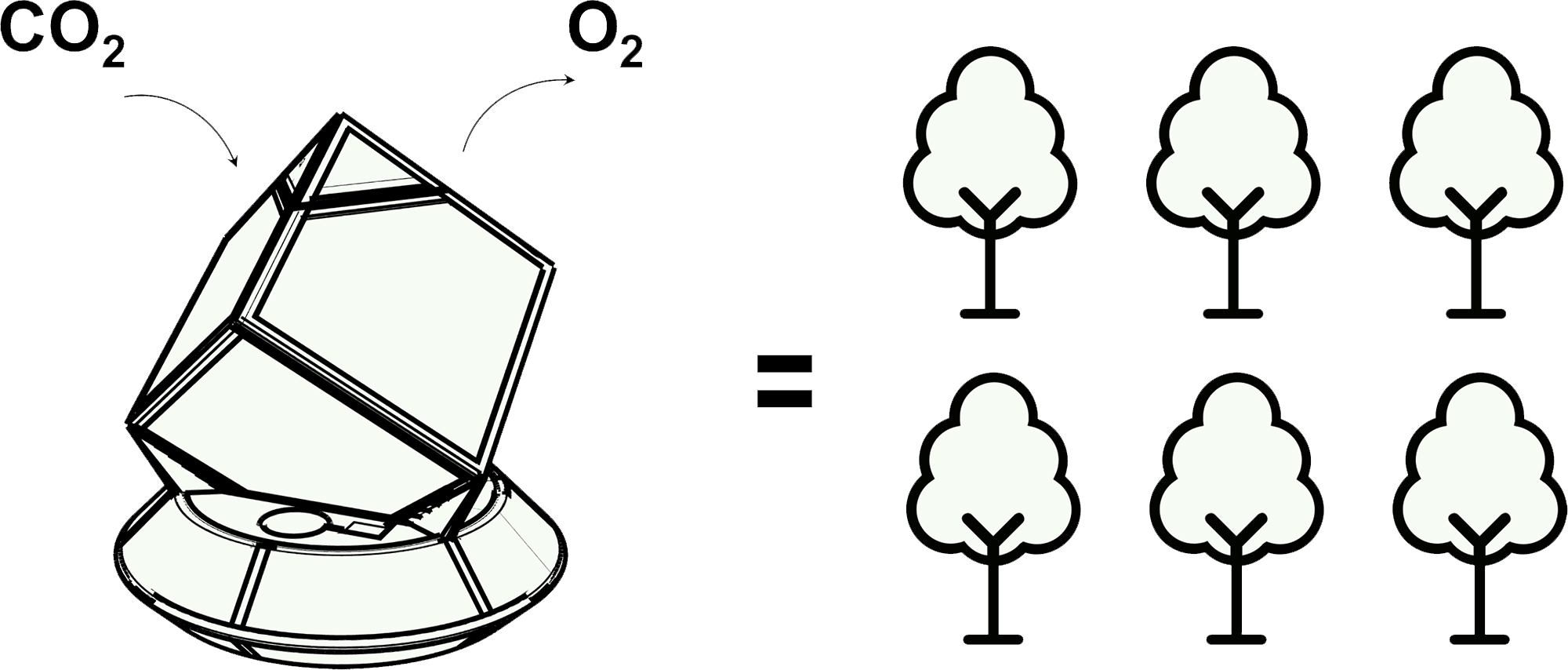
- CO₂ is turned into oxygen by microalgae.
- Carbon ends up stored as biomass.
- That biomass can be harvested as fertilizer.
- About 1.83 kg CO₂ removed per kg of biomass.
- Roughly equal to the CO₂ removal of ~six trees per year (per unit).
From freshwater to ocean restoration
Earlier, our work focused on freshwater bioremediation and carbon removal using diatoms. In rivers, we used bioaugmentation to foster diatoms, while in lakes we targeted the removal of harmful algal blooms (HABs) that generate algal toxins.
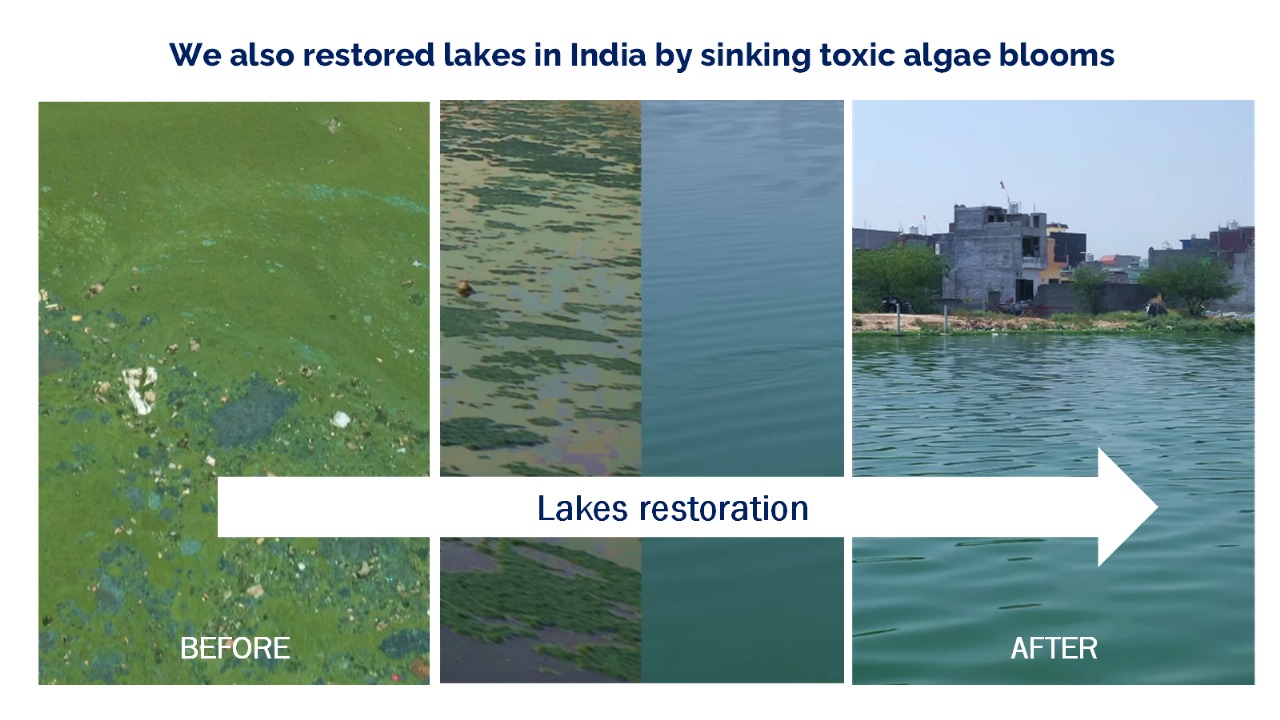
Why the ocean?
We are expanding to the open ocean with the objective of restoring micronutrient deficiencies in marine systems. Primary productivity is limited in roughly one-third of the global ocean due to insufficient micronutrients like iron—meaning phytoplankton growth is constrained across ~33% of the seas.
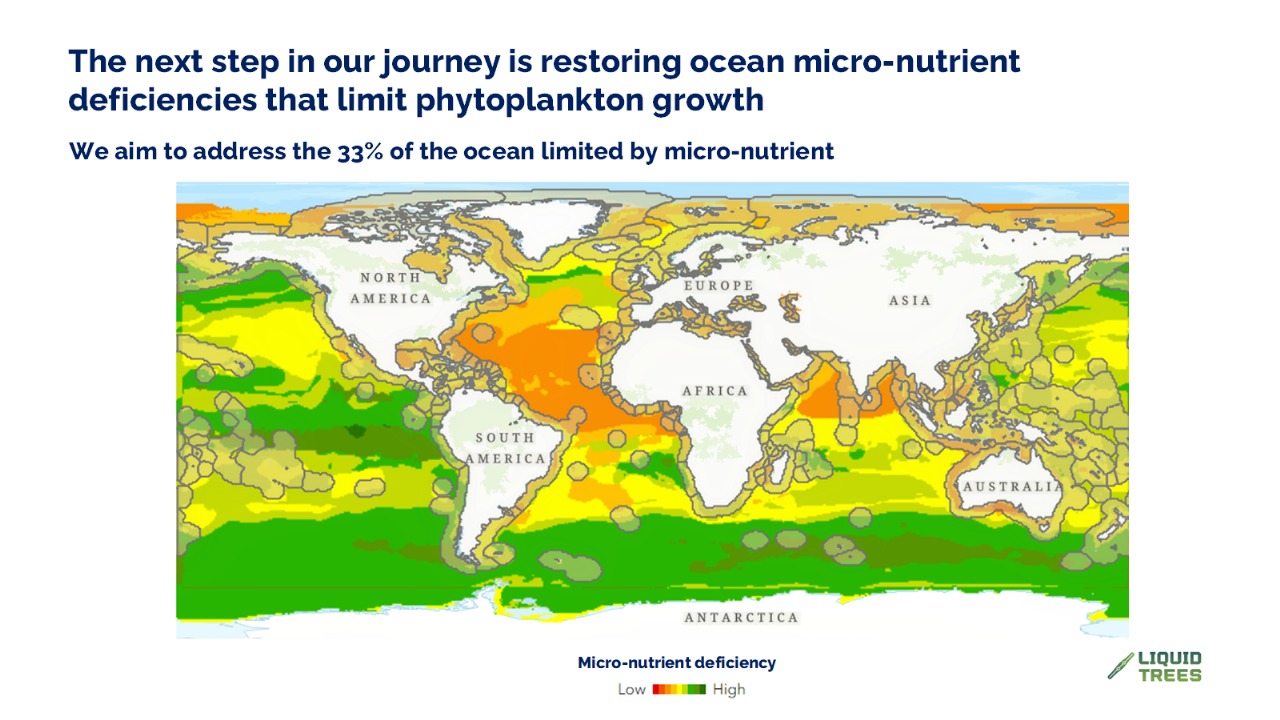
Why is that?
The open ocean doesn’t get many nutrients from land. Wind-blown dust delivers tiny amounts of iron and other micronutrients across long distances, helping plankton grow even in remote waters. Studies show this dust can support a meaningful share of plankton growth, and those blooms drive about 20–40% of the carbon that sinks from the surface into the deep ocean each year.
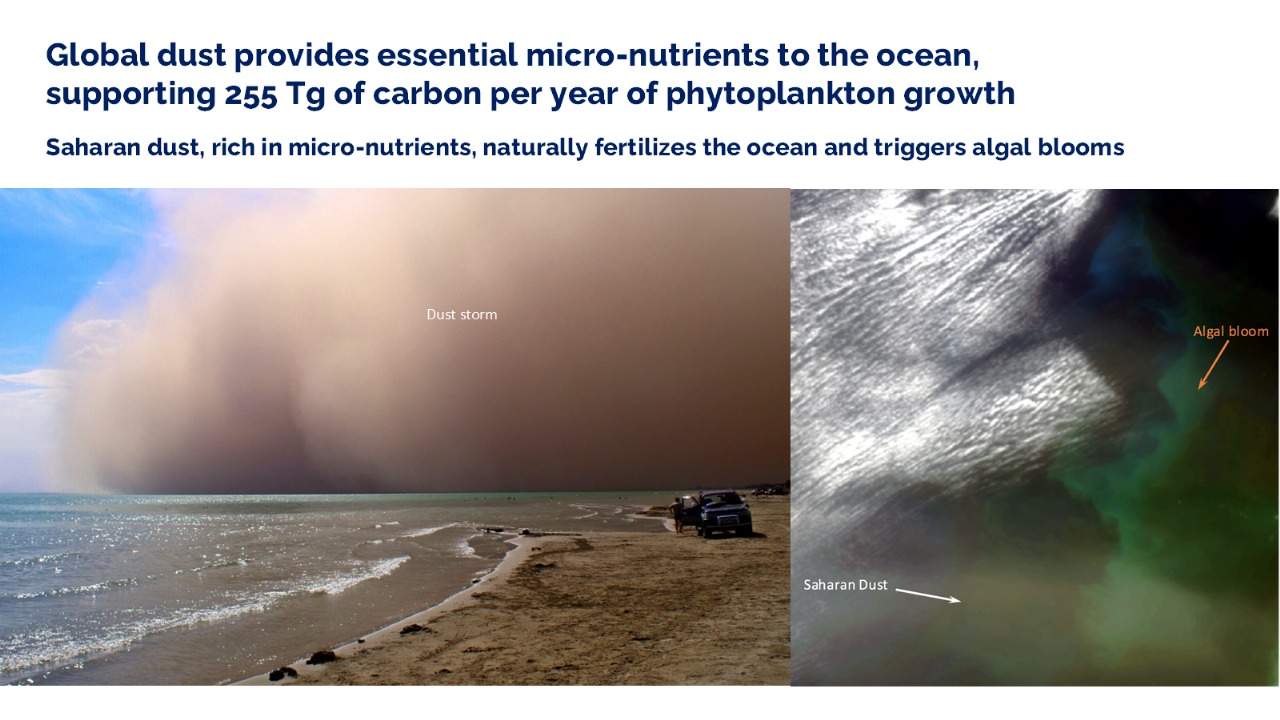
Iron restoration & whales
Industrial whaling removed many of the ocean’s large nutrient recyclers. Whales eat iron-rich prey and return iron to the surface in their waste, which helps phytoplankton grow. Thoughtful iron restoration aims to revive these natural links—more diatoms → more krill → better feeding for whales—while strengthening the biological carbon pump.
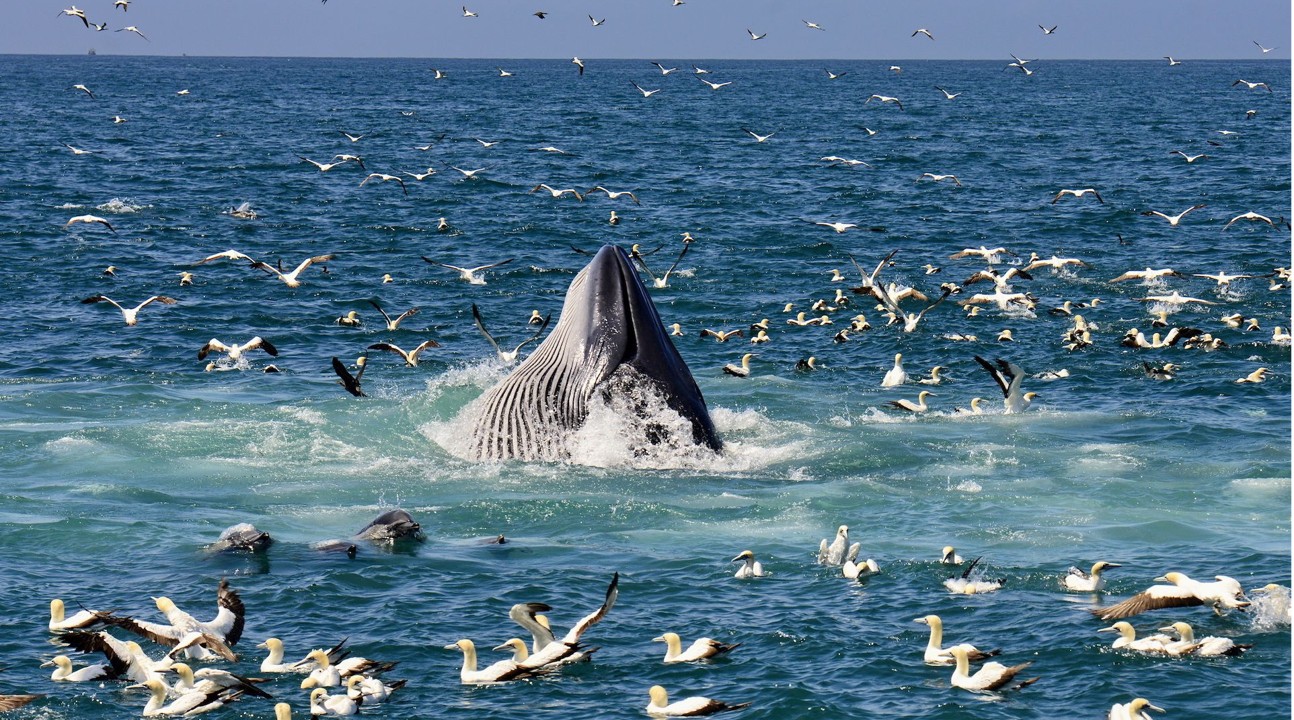

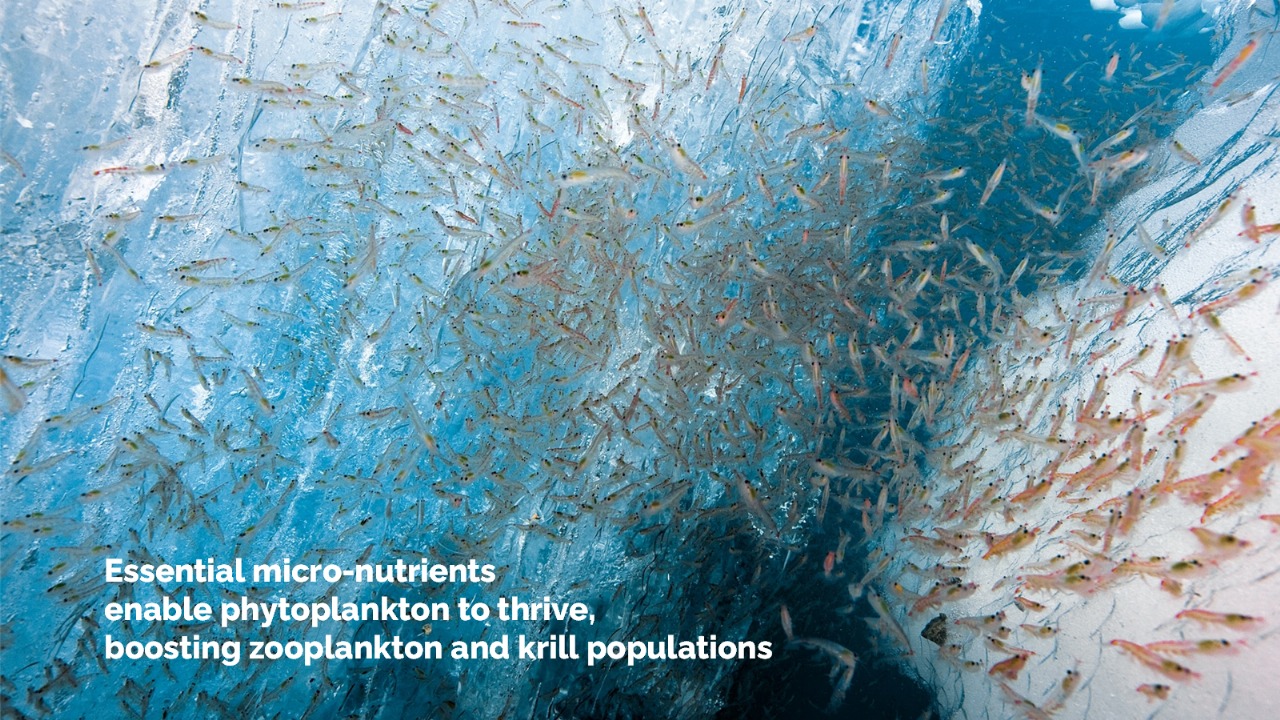
Big animals help keep the ocean productive. Whales recycle nutrients near the surface, boosting the tiny plants that start the food web. Ocean currents bring the “big” nutrients; whales help keep the “trace” ones in play. Healthy loops mean more plankton, more krill, and better feeding for whales.
Further reading
- Science — dust–ocean biogeochemistry
- NOAA — Saharan dust and its impacts
- Earth-Science Reviews — dust as a nutrient source
- NASA Earth Observatory — video overview
From river catchments to the open ocean, our goal is the same: use measurable, nature-aligned interventions to restore productivity, protect life, and move carbon to lasting stores—openly, cautiously, and with strong science.
